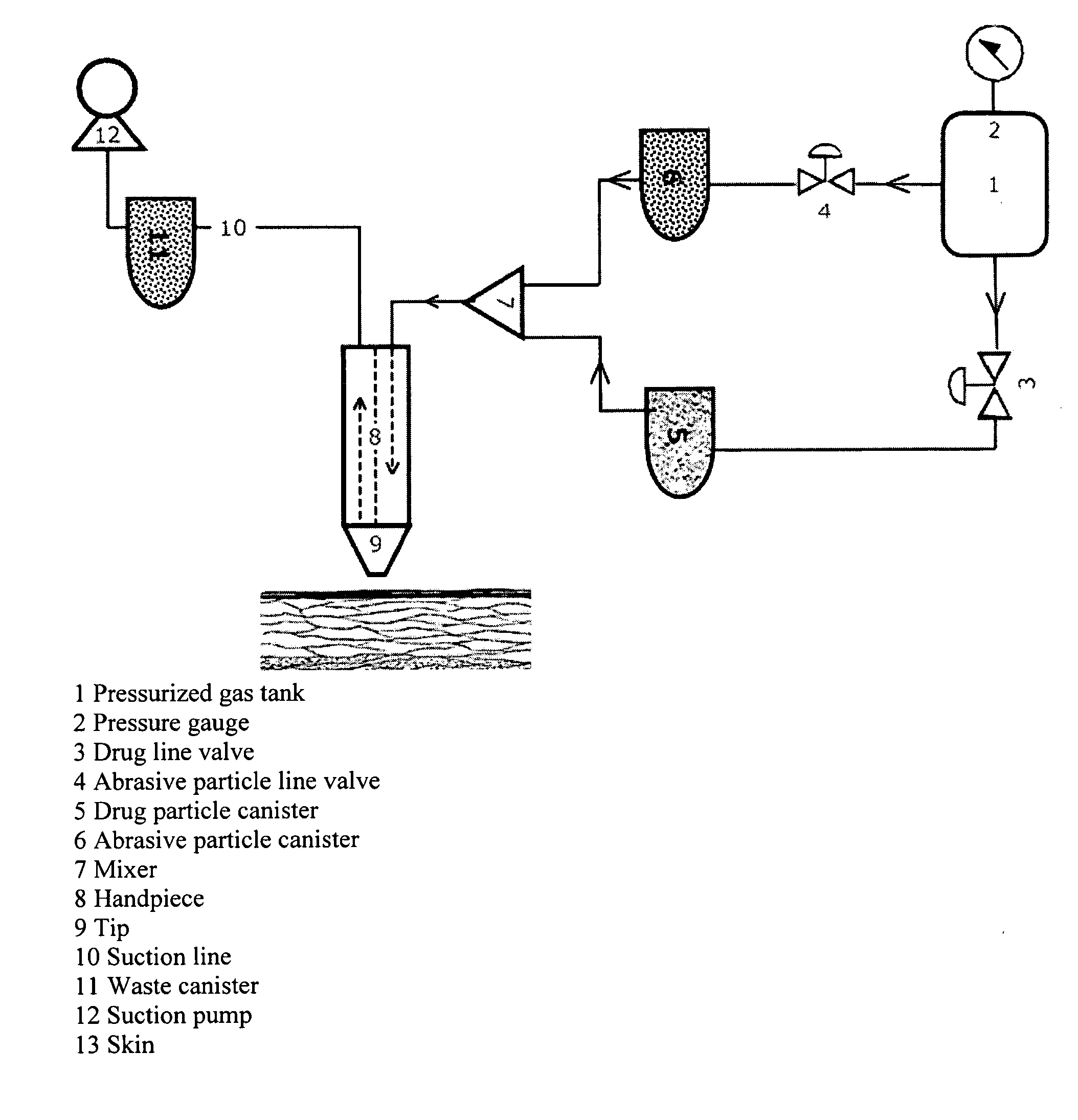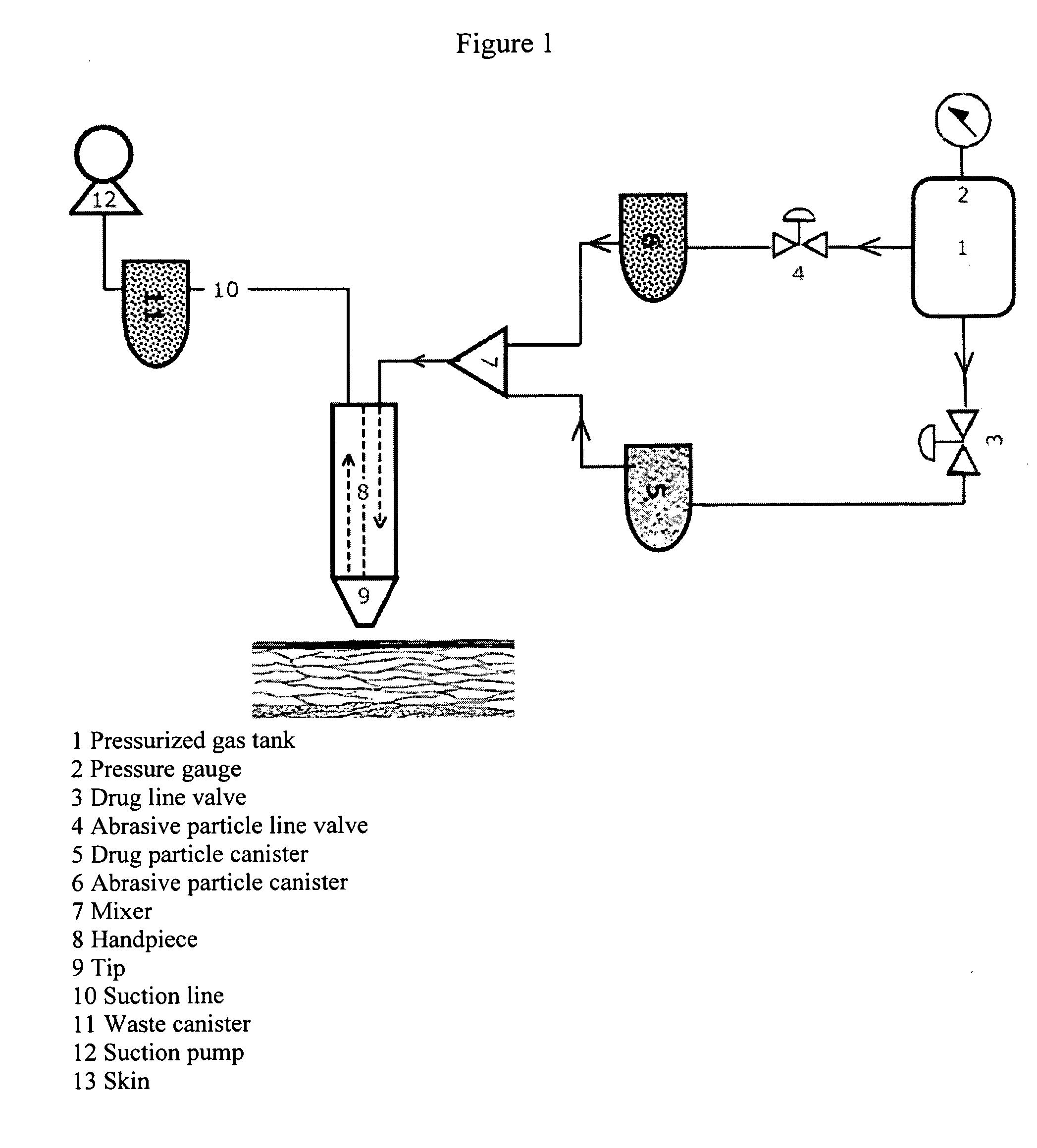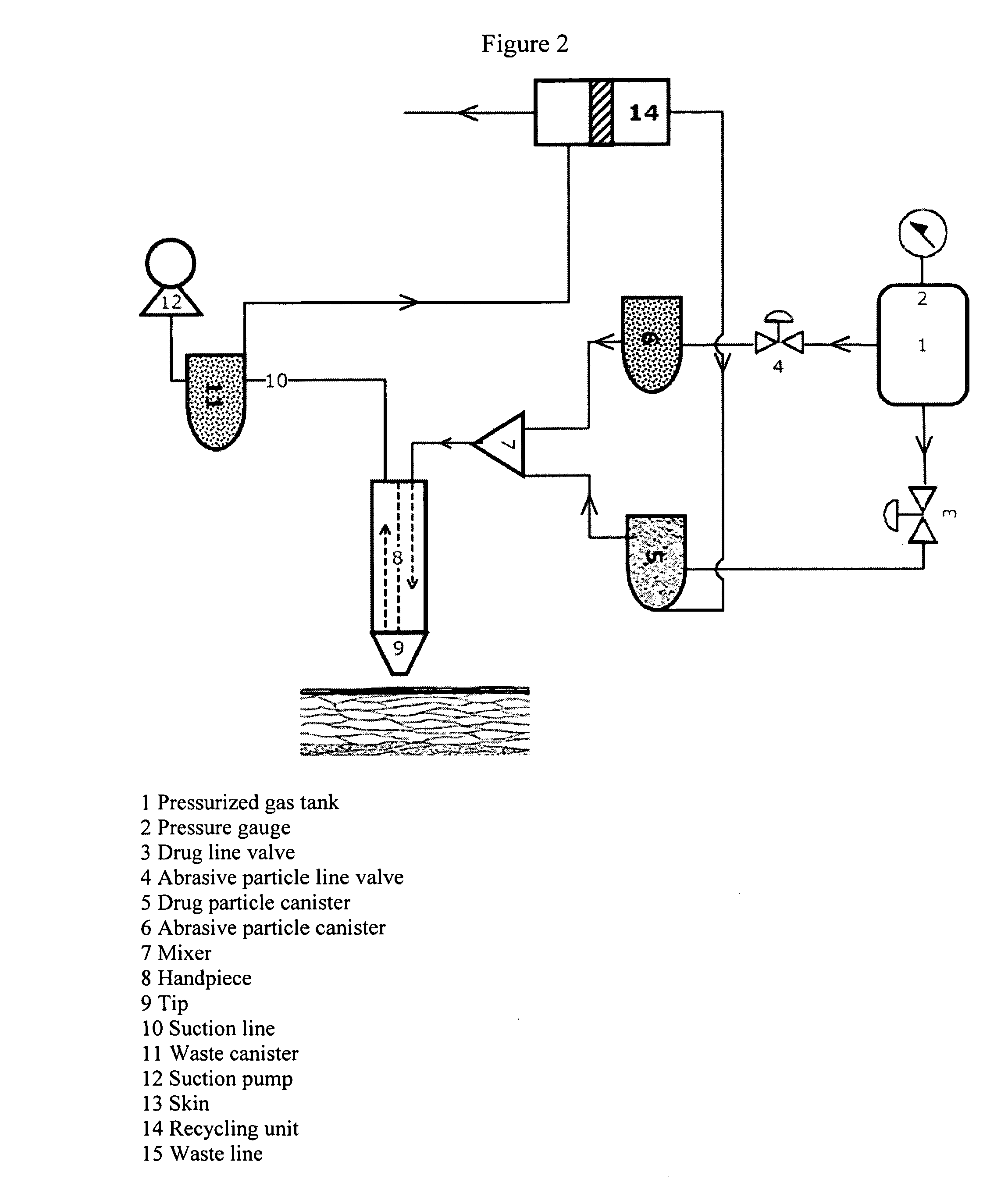Methods, kits, and compositions for administering pharmaceutical compounds
a technology of pharmaceutical compounds and compositions, applied in the field of pharmaceutical compound administration methods, kits and compositions, can solve the problems of microdermabrasion particles being accidentally embedded during procedures, the momentum density of most particles is not sufficient, and the embedding of particles is significant, etc., to achieve the effect of increasing the percentage of cells, and increasing the number of cells
- Summary
- Abstract
- Description
- Claims
- Application Information
AI Technical Summary
Benefits of technology
Problems solved by technology
Method used
Image
Examples
example 1
Composition for Skin Abrasion, Strong Adhesion to Skin, Controlled Drug Release, Biodegradability, and Use in a Conventional Microdermabrasion Device
[0135]One or more of the compounds of the invention (e.g., EGFR inhibitors as described above) are formulated into a polyanhydride polymer synthesized by established methods (Mathiowitz et al, Biomaterials, 24, 2003). This method comprises a first step in which fumaric anhydride oligomer and sebacic anhydride oligomer are blended in a melt polycondensation process, and a second step in which microspheres of this polymer are obtained through a holt melt technique (Mathiowitz et al, J Control Rel, 5, 1987). The spheres obtained are sieved to a certain desired size range (e.g., from 100 to 125 μm). The desired size range may vary depending on (1) the desired release duration (larger particles take longer to degrade and therefore release drug for a longer period), and (2) the desired abrasive power (larger particles are more abrasive).
[0136...
example 2
Composition Sensitive to Exogenous or Endogenous Stimuli for Controlled Drug Release with an Initial Delay, Biodegradability, and Use in a Conventional Microdermabrasion Device
[0143]One or more of the pharmaceutical compounds used in the invention (e.g., a small molecule EGFR inhibitor) may also be formulated into a hydrogel using methods known in the art (see, for example, N Peppas et al, J Biomater Sci Polymer Edn, 15, 2, 2004). This hydrogel can swell without dissolving when placed in a biological tissue. The hydrogel carrier has the convenient properties of being degradable in a biological environment, and most notably, the ability to swell in response to changes in the surrounding environment, which in turn may allow the pharmaceutical compound release in a controlled manner. Depending on the specific type of hydrogel, the environmental change that causes the swelling may include a change in pH (acidic or basic hydrogels), temperature (thermoresponsive hydrogel), or ionic stren...
example 3
Composition that Melts at Body Temperature, is Biodegradable, and can be Used in a Conventional Microdermabrasion Device
[0149]One or more of the compounds used in the invention (e.g., EGFR inhibitors, retinoids, anti-inflammatories, etc.) are formulated into a low melting fat (e.g., sal fat olein, cocoa butter, palm super olein, and olive oil) or a mixture of low melting and high melting fats (e.g., fully hydrogenated rapeseed oil with a high amount of behenic acid, fully hydrogenated rapeseed oil with a high amount of stearic acid, tristearoyl-glycerol, triarachidonoyl-glycerol, and tribehenoyl-glycerol) by any of several well-established methods, such as disk spinning (Geary et al, Journal of Controlled Release, 23, Issue 1, 1993) or rapid cooling and heating cycles Higaki K et al, Journal of the American Oil Chemists Society, (3), 2003. The fat or mixture of fats has the desirable property of being a solid below body temperature and melting at or near body temperature. The carrie...
PUM
 Login to View More
Login to View More Abstract
Description
Claims
Application Information
 Login to View More
Login to View More - R&D
- Intellectual Property
- Life Sciences
- Materials
- Tech Scout
- Unparalleled Data Quality
- Higher Quality Content
- 60% Fewer Hallucinations
Browse by: Latest US Patents, China's latest patents, Technical Efficacy Thesaurus, Application Domain, Technology Topic, Popular Technical Reports.
© 2025 PatSnap. All rights reserved.Legal|Privacy policy|Modern Slavery Act Transparency Statement|Sitemap|About US| Contact US: help@patsnap.com



